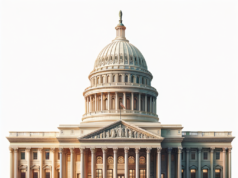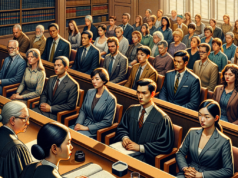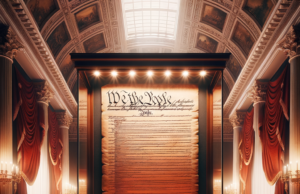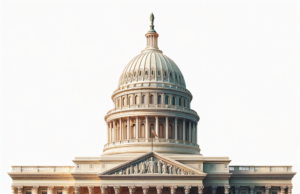Contents
- 1 Understanding the Current Landscape of Gun Safety Laws in the United States
- 2 The Historical Context: How Gun Laws Have Evolved Over the Decades
- 3 Key Statistics: Analyzing the Impact of Gun Safety Regulations on Public Safety
- 4 The Role of Advocacy Groups in Shaping Gun Safety Legislation Today
- 5 Challenges and Controversies: The Debate Surrounding Gun Control Measures
- 6 Future Directions: Potential Reforms and Their Implications for Gun Safety
In recent years, the issue of gun safety laws in the United States has garnered significant attention, igniting passionate debates across the political spectrum. With mass shootings becoming an all-too-frequent occurrence and public safety concerns rising, understanding the current landscape of gun safety laws is crucial. This article aims to unveil the alarming reality of gun safety laws today by examining their historical context, analyzing key statistics, exploring the role of advocacy groups, addressing the challenges and controversies surrounding gun control measures, and considering potential reforms for the future.
Understanding the Current Landscape of Gun Safety Laws in the United States
The current landscape of gun safety laws in the United States is characterized by a patchwork of regulations that vary significantly from state to state. While some states have enacted stringent measures such as universal background checks, waiting periods, and restrictions on high-capacity magazines, others maintain more permissive laws that prioritize the right to bear arms. The federal government has established certain baseline regulations, such as the Gun Control Act of 1968 and the Brady Handgun Violence Prevention Act, but these laws often leave substantial gaps that states can exploit. As a result, the effectiveness of gun safety regulations is often contingent upon local governance, leading to disparities in public safety outcomes across the nation.
The Historical Context: How Gun Laws Have Evolved Over the Decades
Gun laws in the United States have undergone significant changes since the founding of the nation, reflecting broader societal attitudes toward firearms and violence. The Second Amendment, ratified in 1791, enshrined the right to bear arms, but its interpretation has evolved over time. The early 20th century saw the introduction of the first federal gun control laws, primarily in response to rising crime rates during Prohibition. The assassinations of prominent figures in the 1960s spurred further legislative action, culminating in the Gun Control Act of 1968. In recent decades, the rise of mass shootings has reignited the debate over gun control, leading to calls for more comprehensive regulations. This historical context is essential for understanding the complexities of current gun safety laws and the ongoing struggle to balance individual rights with public safety.
Key Statistics: Analyzing the Impact of Gun Safety Regulations on Public Safety
Statistics reveal a troubling correlation between lax gun safety regulations and increased rates of gun violence. According to the Centers for Disease Control and Prevention (CDC), over 45,000 gun-related deaths occurred in the United States in 2020 alone, marking a significant increase from previous years. States with stricter gun laws, such as California and New York, tend to experience lower rates of gun deaths compared to states with more permissive laws, like Texas and Florida. Research conducted by the Giffords Law Center indicates that states with universal background checks have 15% fewer gun homicides than those without such measures. These statistics underscore the critical need for effective gun safety regulations to mitigate the alarming rates of gun violence and enhance public safety.
The Role of Advocacy Groups in Shaping Gun Safety Legislation Today
Advocacy groups play a pivotal role in shaping the discourse surrounding gun safety legislation in the United States. Organizations such as Everytown for Gun Safety and the Brady Campaign to Prevent Gun Violence actively lobby for stricter gun laws, mobilizing grassroots support and raising awareness about the consequences of gun violence. Conversely, groups like the National Rifle Association (NRA) advocate for the protection of Second Amendment rights and oppose many proposed regulations. The interplay between these advocacy groups significantly influences public opinion and legislative outcomes, as they engage in campaigns to educate citizens and lawmakers about the implications of gun safety laws. Their efforts highlight the importance of civic engagement in the ongoing debate over gun control.
Challenges and Controversies: The Debate Surrounding Gun Control Measures
The debate surrounding gun control measures is fraught with challenges and controversies, often polarizing communities and lawmakers alike. Proponents of stricter gun laws argue that such measures are essential for reducing gun violence and protecting public safety. However, opponents contend that these regulations infringe upon individual rights and do little to deter criminals, who often obtain firearms illegally. Additionally, the political landscape complicates the issue, with many lawmakers hesitant to support gun control measures due to fear of backlash from constituents or powerful lobbying groups. This contentious environment has led to legislative gridlock, preventing meaningful reforms from being enacted and leaving many communities vulnerable to gun violence.
Future Directions: Potential Reforms and Their Implications for Gun Safety
As the conversation around gun safety laws continues to evolve, several potential reforms are gaining traction among lawmakers and advocacy groups. Proposals for universal background checks, red flag laws, and restrictions on assault weapons are at the forefront of discussions aimed at enhancing public safety. Additionally, there is a growing recognition of the need for comprehensive mental health support and community-based interventions to address the root causes of gun violence. However, the implementation of these reforms will require overcoming significant political and social barriers. The implications of such changes could be profound, potentially leading to a decrease in gun violence and a shift in the cultural perception of firearms in American society.
In conclusion, the alarming reality of gun safety laws today reflects a complex interplay of historical context, statistical evidence, advocacy efforts, and ongoing debates. As the nation grapples with the pressing issue of gun violence, it is imperative to engage in informed discussions about potential reforms that prioritize public safety while respecting individual rights. The path forward will require collaboration among lawmakers, advocacy groups, and communities to create a safer environment for all Americans. Only through a comprehensive approach can the United States hope to address the challenges posed by gun violence and foster a culture of responsible gun ownership.

























